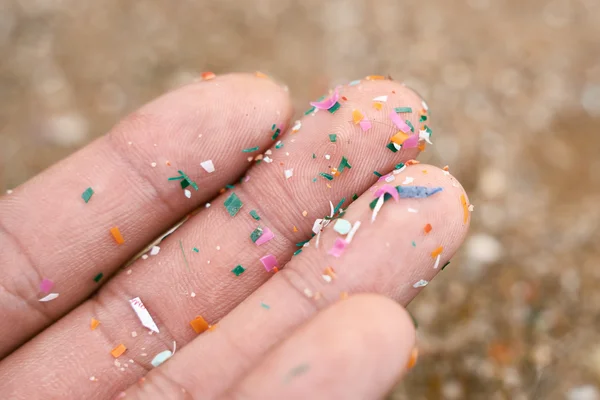NEWS

The Invisible Threat: Microplastics and Their Harmful Effects
So what exactly is a microplastic? Microplastics are tiny plastic particles less than 5 millimeters in size. These minuscule pieces of plastic have become a major environmental concern due to their pervasive presence in our ecosystems and their harmful effects on wildlife, human health, and the environment.
Where do microplastics come from?
Microplastics originate from a variety of sources, but here are the most common:
Primary Microplastics: These are manufactured to be small and are used in products like cosmetics, toothpaste, and industrial scrubbers. They also include microbeads found in exfoliating products.
Secondary Microplastics: These result from the breakdown of larger plastic debris due to exposure to environmental factors like sunlight and wave action. Common sources include plastic bags, bottles, and fishing nets.
How Do Microplastics Enter the Environment?
Microplastics enter the environment through various pathways:
Wastewater Treatment Plants: Microplastics from household products can pass through filtration systems and end up in water bodies.
Surface Runoff: Rainwater can carry microplastics from land into rivers and oceans.
Atmospheric Deposition: Microplastics can be transported by wind and eventually settle in different environments, including remote areas.
What are the harmful effects of microplastics?
Impact on Wildlife:
Ingestion: Marine animals often mistake microplastics for food. Ingesting these particles can lead to physical blockages, internal injuries, and exposure to toxic chemicals. For example, microplastics have been found in the digestive systems of fish, seabirds, and marine mammals.
Bioaccumulation and Biomagnification: Microplastics can absorb harmful pollutants from the surrounding environment. When ingested by smaller organisms, these pollutants can accumulate and magnify up the food chain, ultimately affecting larger predators, including humans.
Impact on Human Health:
Consumption: Microplastics have been found in various food items, including seafood, honey, and salt. They have also been detected in drinking water, both bottled and tap.
Health Risks: The ingestion of microplastics poses potential health risks due to their ability to carry toxic chemicals. These chemicals can cause endocrine disruption, reproductive harm, and cardiovascular damage. Additionally, the physical presence of microplastics in the human body can lead to inflammation and tissue damage. Perhaps most notably, the University of New Mexico recently published a study showing that 100% of tested males from ages 16 to 80 had microplastics in their testes.
Environmental Impact:
Soil Contamination: Microplastics can accumulate in agricultural soils, affecting soil health and potentially entering the food chain through crops.
Water Pollution: The presence of microplastics in water bodies can affect aquatic ecosystems and water quality. They can also impact the growth and reproduction of aquatic organisms.
What Can Be Done to Address the Issue?
Reduce Plastic Use: Reducing the use of single-use plastics and opting for alternatives like reusable bags, bottles, and containers can help minimize the amount of plastic waste that can potentially become microplastics.
Improved Waste Management: Enhancing waste management practices and recycling systems can prevent plastics from entering the environment.
Policy and Legislation: Governments can implement policies to ban or restrict the use of microplastics in products, promote sustainable packaging, and fund research on microplastics.
Public Awareness and Education: Educating the public about the sources and impacts of microplastics can encourage more responsible plastic use and disposal.
Research and Innovation: Supporting research on microplastics can lead to better understanding and innovative solutions to mitigate their effects.


